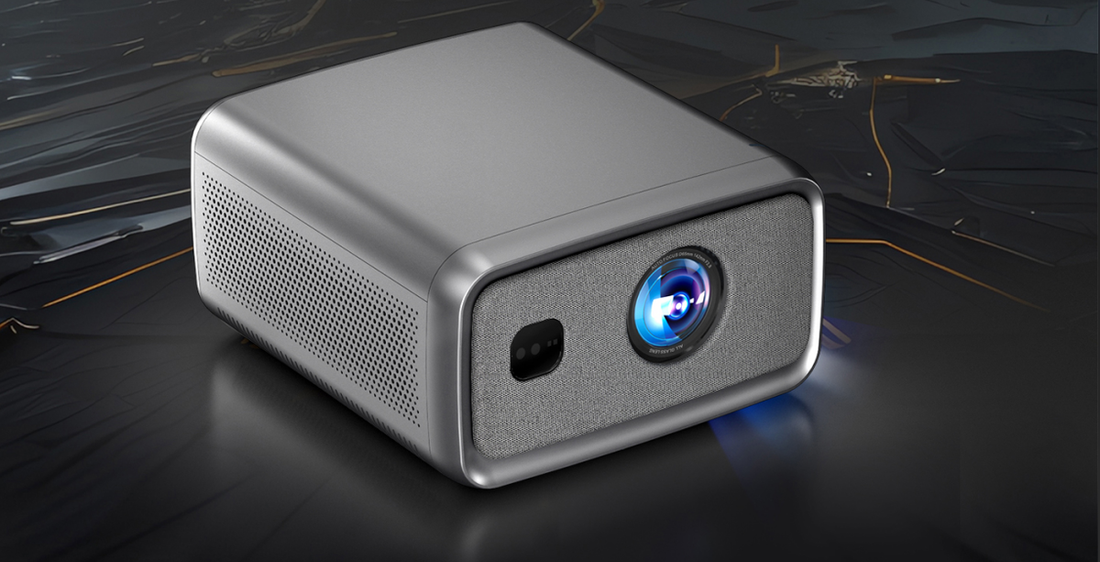
Best Projectors for Home Theater: Reviews and Buying Guide
Share
The global projector market in 2025 continues to grow as people increasingly pursue enhanced home entertainment experiences. Projectors offer larger screens and more immersive viewing, creating a home theater effect. Especially when watching movies, playing games, or viewing sports events, projectors deliver a more stunning visual experience compared to smaller screen TVs.
Furthermore, with technological advancements, projectors now rival modern televisions in terms of resolution, color gamut, and brightness. Compared to TVs, projectors boast larger screens and greater portability, allowing for seamless transitions between camping, living rooms, bedrooms, and offices.
Technological progress has led to increased product accessibility and affordability, making projectors more suitable for the general public, which is why many modern consumers prefer purchasing a projector over a television.
However, selecting the right projector can be challenging due to the multitude of brands and varying price points in the market, ranging from tens to thousands or even tens of thousands of dollars. So, how do we choose the most suitable projector for our needs?
First, you need to determine the primary purpose of your projector. Common uses include watching movies, sports events, business presentations (PowerPoint), and gaming on a large screen.
For movie enthusiasts, image quality is paramount. A minimum resolution of 1080P is essential; 720P should be avoided as it compromises the color reproduction crucial for cinematic experiences. This will make your movie experience very bad. Brightness, measured in ANSI lumens, is also a key consideration. If your viewing environment is brightly lit, a higher brightness projector is necessary. In such environments, a projector with around 2000 ANSI lumens is recommended. Note that brightness is directly proportional to projector noise, so avoid solely prioritizing brightness. We must enjoy movies, not become victims of noise. Here I recommend the Everycom-Cubelite.
Projectors for business purposes are generally more affordable, as they are primarily used for PowerPoint presentations and company meetings. For these, brightness (ANSI lumens) must be sufficiently high, and the device should have ample connectivity options to accommodate various content storage devices.
Gamers should prioritize "network latency." Significant delays between button inputs and on-screen actions can ruin the gaming experience. Millisecond-level response times combined with immersive large-screen visuals are ideal for gamers. Secondly, "refresh rate" is crucial. A high refresh rate delivers smoother and clearer gameplay, especially in FPS games like CSGO, where it can provide a competitive edge.
For those with less specific needs, such as casual YouTube or TikTok viewing, portable projectors are ideal. Compared to other types, portable projectors occupy minimal space, allowing for easy transitions between bedrooms, living rooms, and outdoor settings. I recommend the Everycom-Rondo.
Next, consider your room's characteristics and the appropriate projector.
As mentioned earlier regarding brightness (ANSI lumens), if your room is brightly lit with no curtains to block sunlight, and you prefer daytime viewing, direct sunlight can severely degrade image clarity. A high-brightness projector, possibly around 3000 ANSI lumens, is necessary to counteract natural light. This may increase your budget.
In darker environments, 500-1000 ANSI lumens can provide excellent image quality. In my testing, the 500 ANSI Rondo produced images nearly indistinguishable from those of expensive televisions. Portable projectors also offer flexibility in placement. When choosing these projectors, prioritize built-in speakers unless you plan to connect external ones. To assess sound quality before purchase, look for product review videos on platforms like YouTube or TikTok.
Another crucial factor is room size. For limited spaces, short-throw or ultra-short-throw lenses are recommended. These lenses project large images from short distances. Long-throw lenses are suitable for larger venues. Project specifications often include "throw ratio," which helps determine lens type. A throw ratio below 1 indicates a short-throw lens, below 0.6 indicates an ultra-short-throw lens, and above 2 indicates a long-throw lens.
While you can project directly onto a wall, a projection screen enhances the viewing experience. In bright rooms, an ambient light rejecting (ALR) screen, with its special optical coating, is ideal. For convenience, a white bed sheet or tarp can suffice if stretched tightly to eliminate wrinkles.
Finally, consider memory requirements. Sufficient memory improves system stability and reduces crashes. Insufficient memory can cause lag or crashes when running demanding applications or playing high-definition videos. Note that advertised memory may not be entirely available due to pre-installed system and apps.
I won't delve into features like Bluetooth, Wi-Fi, auto-focus, and keystone correction, as they are now standard in most 2025 projectors. Of course, I'm here to assist with any further questions